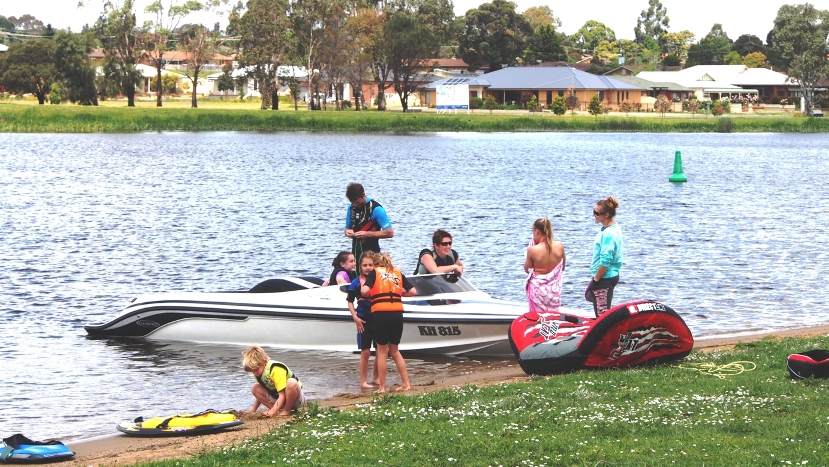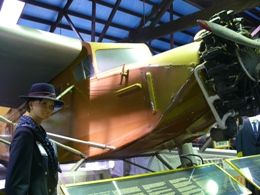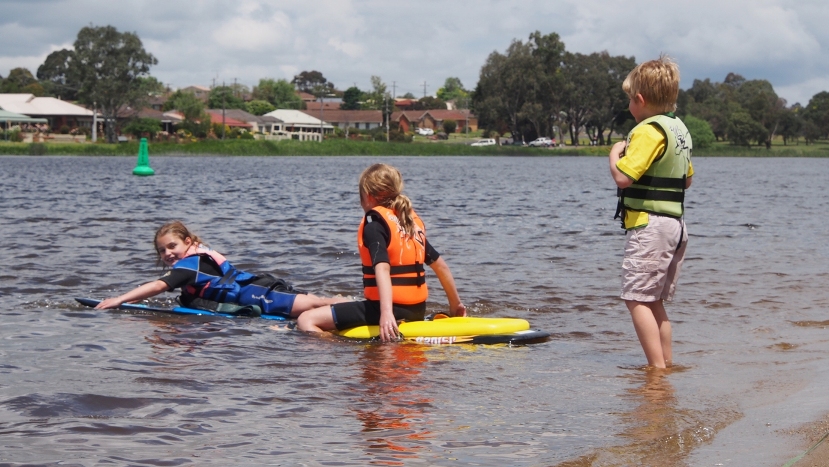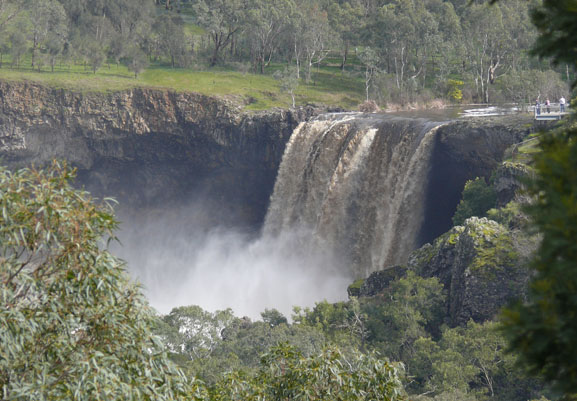
Experience Hamilton
Hamilton is in the centre of Victoria’s famous Western District. The ‘Wool Capital of the World’, Hamilton is notable for its grand buildings, majestic homesteads and fine landscaped gardens.
Thomas Mitchell passed through the Western District in 1836 during his Australia Felix expedition in search of fresh sheep pastures to supply the demands of English textile mills. Passing through the future site of Hamilton, he remarked: “A finer country could scarcely be imagined: enormous trees of the mimosa or wattle, of which the bark is so valuable, grew almost everywhere”.
In addition to wool production, today’s agricultural activities include beef cattle, prime lambs, a variety of crops, including canola, wheat and barley, horticulture and timber.
Specialty shopping, various eating houses to suit all tastes and budgets with numerous cultural experiences are the hallmarks of this classic Western District city.
Things to see and do
Walking, cycling and driving tours: Call at the Visitor Information Centre in Lonsdale Street to obtain a walking tour of Hamilton a booklet . Cycling and driving routes can also be provided. There is also a display relating to the recently beatified Mary McKillop who lived in the region in the 19th century.
Hamilton Art Gallery: Located at 107 Brown Street, the Hamilton Art Gallery is considered one of the state’s leading provincial galleries. The collection includes a series of engravings by 18th-century English satirist William Hogarth, watercolours by 18th-century English artist Paul Sandby, along with a strong collection of 19th and 20th-century Australian paintings. The collection also includes ceramics, furniture, silver, tapestries and artefacts from Tibet, India, Nepal, China and Japan.

Hamilton Botanical Gardens: One of the earliest botanic gardens in Victoria, the Hamilton Botanic Gardens has great historical, scientific (botanical) and aesthetic significance. It received the State’s highest heritage protection, following its inclusion on the Victorian Heritage Register.
After Hamilton was surveyed in 1850, land was set aside for a public garden in 1853 and gazetted in 1870. William Ferguson, a landscaper from the Royal Botanic Gardens in Melbourne, undertook the first plantings on site in 1870. However, from 1881, the gardens were developed to a plan by William Guilfoyle, the curator of the Royal Botanic Gardens and one of Australia’s greatest garden designers and botanists.
Hamilton History Centre: Located in the old Mechanics’ Institute (1865) at 43 Gray Street, is a volunteer based research facility with a collection of more than 2,000 local historical photographs, cemetery records, German settlement history, war records, family history records, parish maps, pastoral properties, records of Hamilton residences, shops, businesses as well as church and school records. Open from 2pm to 5pm every day but Saturday.
 The Sir Reginald Ansett Transport Museum: Sir Reginald Ansett launched Ansett Airlines from Hamilton in 1937. The Ansett Transport Museum is located within one of the company’s original hangars now situated on Ballarat Rd (Glenelg Highway). Displays include a Fokker Universal, similar to the first Ansett plane. It is open daily from 10am to 4pm with a small entry fee. The Sir Reginald Ansett Transport Museum: Sir Reginald Ansett launched Ansett Airlines from Hamilton in 1937. The Ansett Transport Museum is located within one of the company’s original hangars now situated on Ballarat Rd (Glenelg Highway). Displays include a Fokker Universal, similar to the first Ansett plane. It is open daily from 10am to 4pm with a small entry fee.
Campe’s Motor Museum: Recently open for tourists, Campe’s Motor Museum has a collection of 48 old cars, trucks and
memorabilia which is sure to trigger fond memories. A feature of the collection is an Ansett Roadways Clipper bus originally used on the Hamilton to Naracoorte run. Situated at 226 Coleraine Road, the museum is open by appointment – phone 0419 168 400.
Lake Hamilton: is a lake at the north-eastern corner of town which is surrounded by 25 ha of parkland. Created in 1977 by damming the Grange Burn, the 38 hectare lake is popular for fishing and water sports, such as waterskiing, boating, swimming, sailboarding, rowing and canoeing. There is a boat ramp, a walking and cycling track around the lake and, at the end of Rippon Road, there is a beach, playground and picnic-barbecue area.
Hamilton Pastoral Museum: Situated on a 2.5-hectare site on the corner of Ballarat Road and Hiller Lane, the Hamilton Pastoral Museum has showing the development of farming & household technology. Historical buildings at the museum include St Luke’s Church, Cottage, National Bank, Drik Drik Post Office, Byaduk Automatic Exchange, Blacksmith, Myaring Woolshed, Warrayure School rotunda, Coleraine Lock-up and Old Penshurst Police Station.
Other sheds display horse drawn vehicles, threshers, the Deutscher Foundry, extensive collections of tractors, stationary engines, headers, the sheep and wool industry, household, fashion and a saddler and bootmaker.
It is open on the last Saturday of Month, 10am – 2pm, or other times by appointment. Working rallies are held the 3rd weekends in May and October.

Wannon Falls: Situated 19 kilometres west of Hamilton on the Glenelg Highway, the Wannon Falls are very impressive after heavy rain but become only a trickle in mid-summer. There is a koala reserve, a sports area, a playground and picnic-barbecue area. Kangaroos abound and both swimming and fishing can be enjoyed. Several viewing platforms have been carved out of the cliff face. Basic camping facilities are available.

Nigretta Falls: Best viewed after heavy rain, they are broader than Wannon Falls with the water tumbling over the rocks rather than simply plunging to a pool below. There is some outstanding scenery and good fishing, as well as picnic-barbecue areas, a playground and a deep pool for swimming. Turn off the Glenelg Highway 5 kilometres west of Hamilton and follow the signs.

|
|